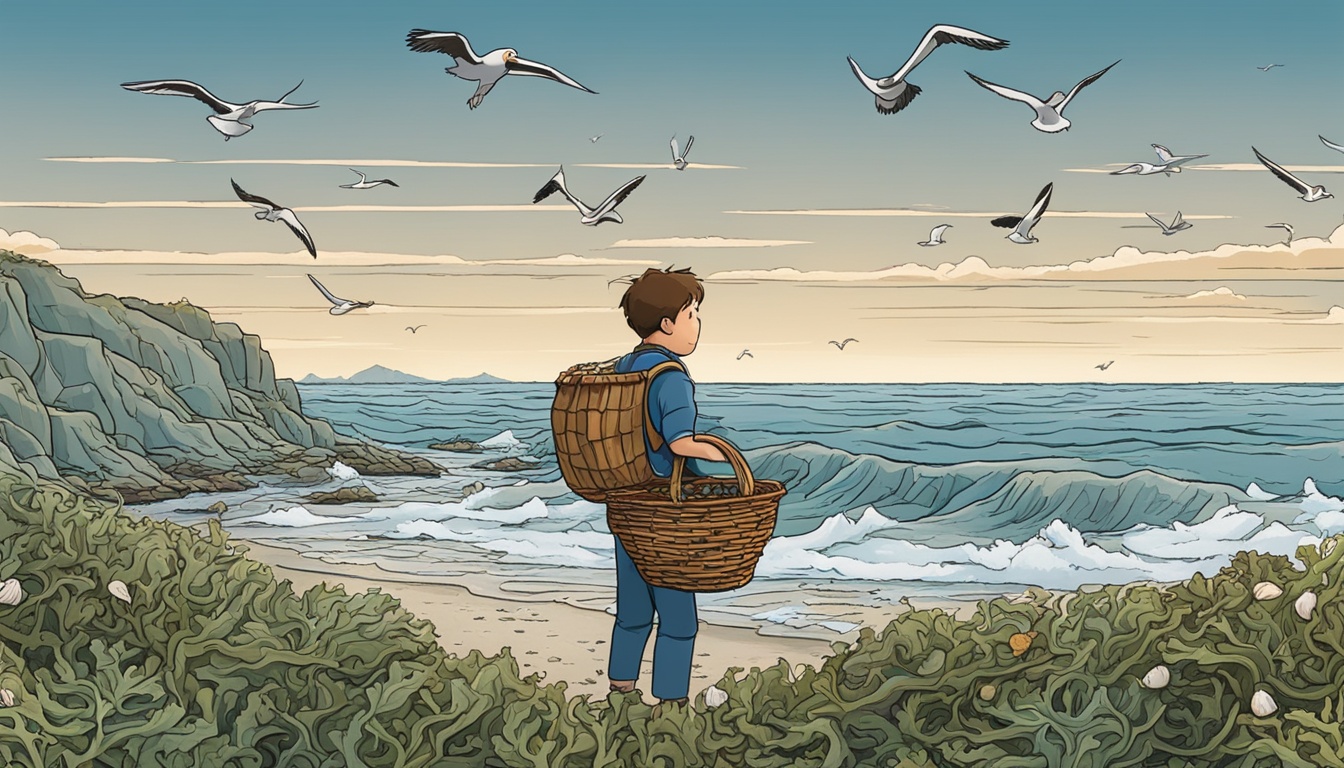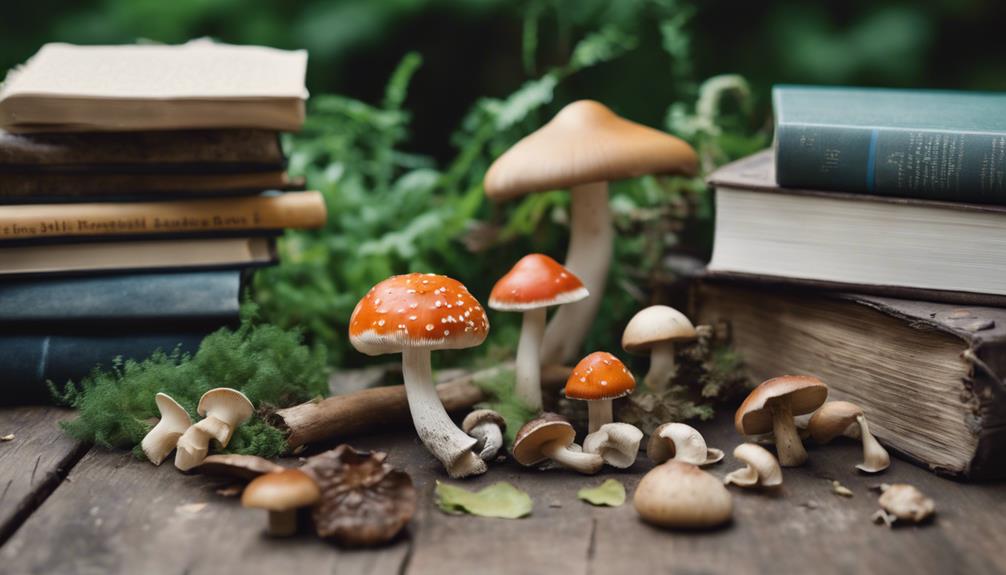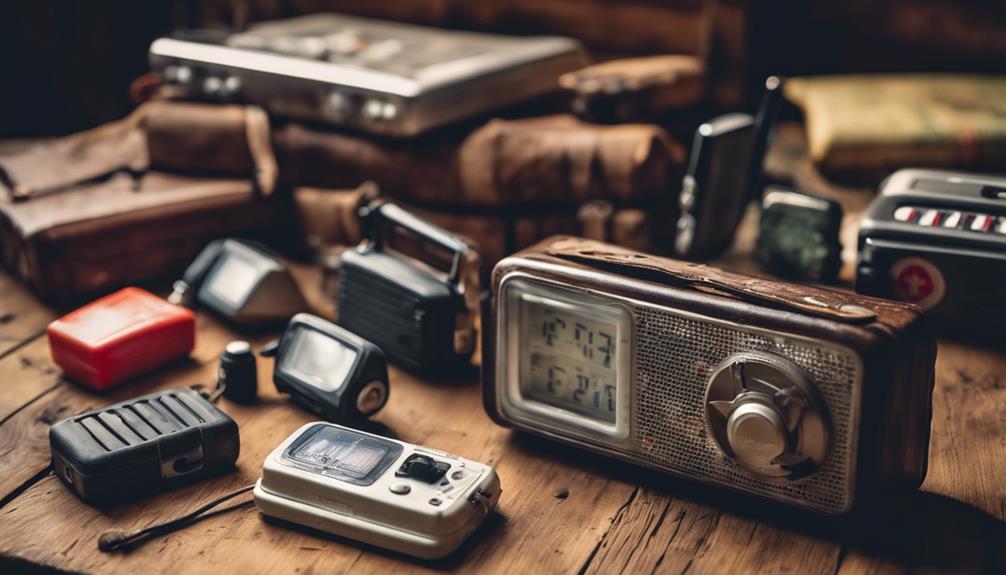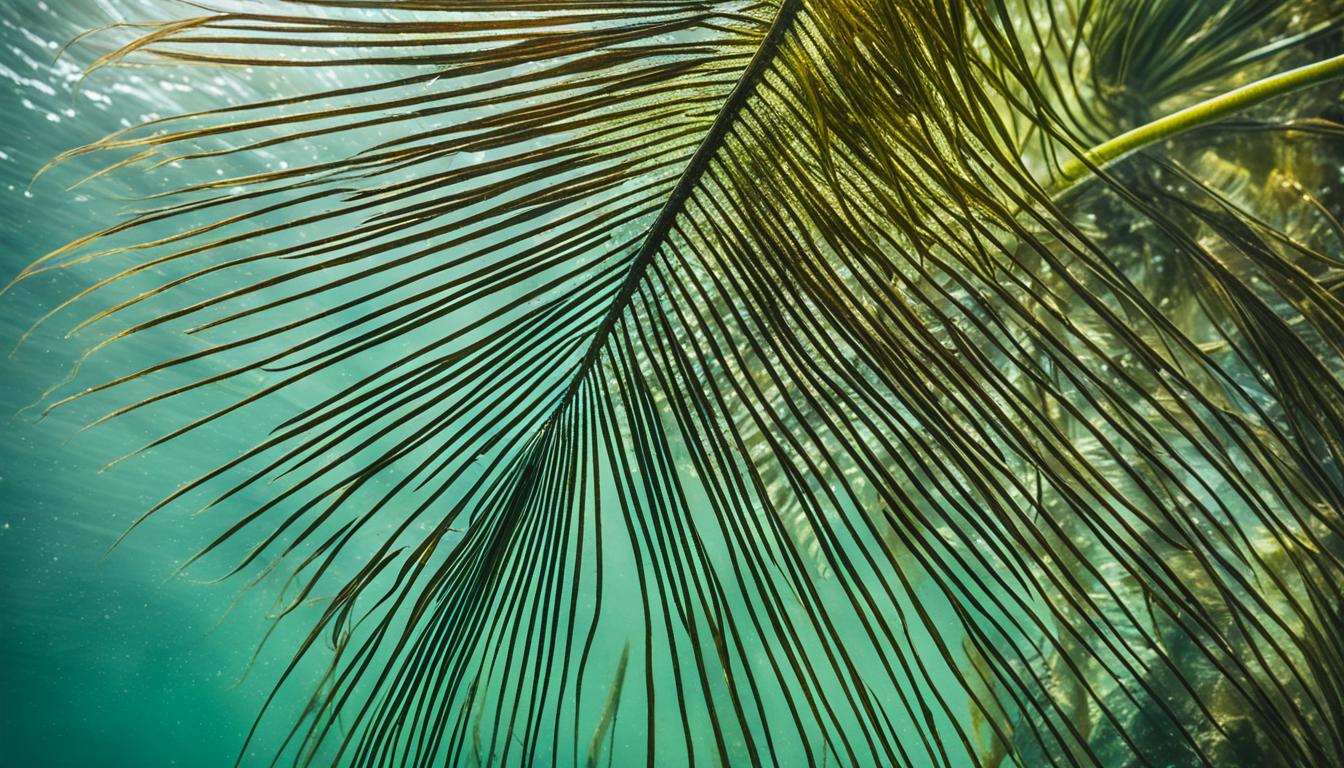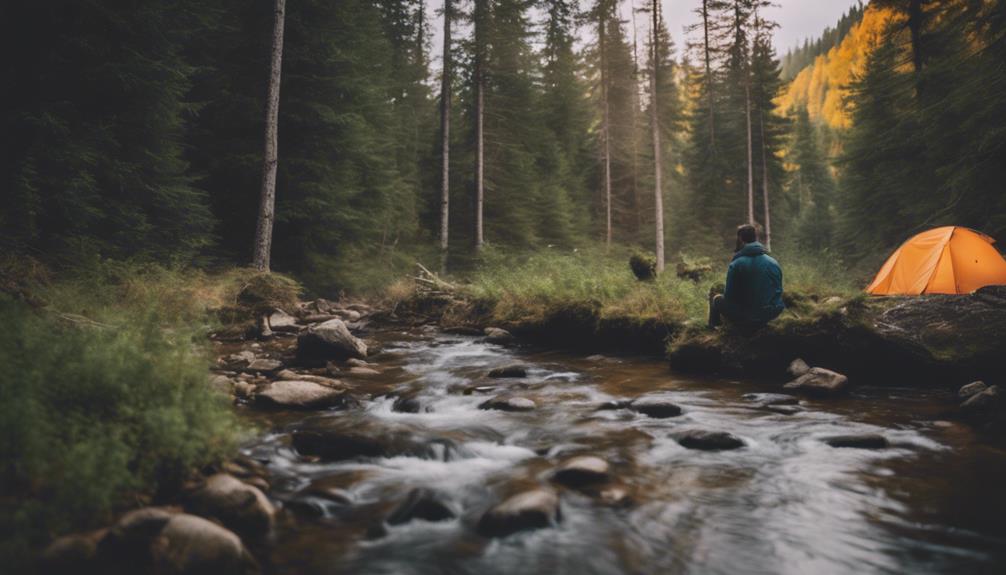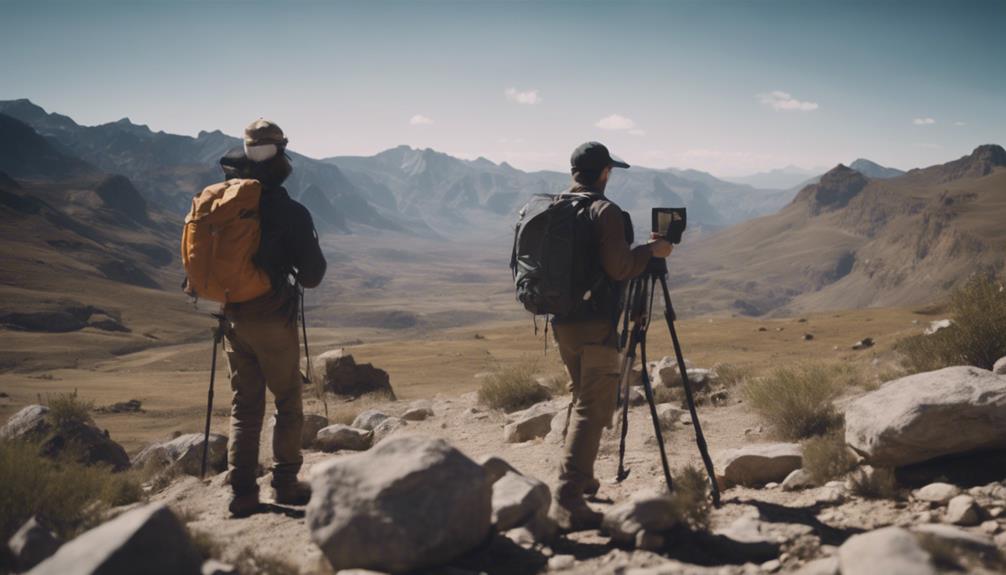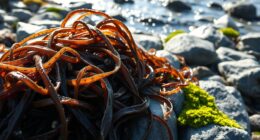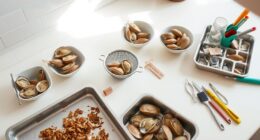Imagine standing on a beach, feeling the salty breeze on your face. As you look at the ocean, think about the hidden food treasures around you. The beach is more than a spot for fun; it’s like a natural pantry full of goodies to find.
Coastal foraging means searching for food in the intertidal zone. This is the beach part that gets covered and uncovered by the tide. You can find tasty shellfish, seaweeds, and plants here. It’s an exciting way to discover what the seashore can offer your plate.
Key Takeaways:
- Coastal foraging involves searching for and gathering food from the intertidal zone.
- The seashore provides an abundance of edible treasures, including shellfish, seaweeds, and coastal plants.
- Proper identification of forageables and adherence to safety guidelines are crucial.
- Coastal foraging can instill a greater respect for the environment and highlight our dependence on nature for survival.
- However, coastal foraging carries certain risks and requires knowledge of sea and weather conditions.
Do Your Research
Start your seaside foraging journey with some research. Learn about the local edible plants and animals. This information helps you choose wisely when collecting nature’s goodies. Luckily, there are many resources to help you with your research.
Begin by looking at online databases and websites about coastal foraging. They have detailed info, photos, and sometimes videos. You can also find books and guides on the subject at your local library.
Foragers find a variety of seafood like mussels, cockles, razor clams, oysters, and limpets. They also pick edible seaweed and marine plants. Examples include sea beet, sea purslane, samphire, sea kale, and sea aster.
When researching, check the best seasons for foraging different items. Mussels and cockles are good all year. But, razor clams and oysters are best in autumn and spring. Knowing the best time to forage helps you plan your trips.
Responsible foraging means taking care of the environment and harvesting sustainably. Learn about local foraging rules and limits. Generally, take no more than 5% of a species from one spot. This practice helps keep the ecosystem healthy.
Get the right tools and containers before going to the beach. Use a cotton sack, basket, or shirt for collecting. Cleaning your gear between trips helps prevent spreading seeds or diseases.
Keep a spirit of curiosity and wonder in your coastal foraging. Every trip is a chance to learn more about nature and connect with the sea’s gifts. So, do your research, get ready, and enjoy your coastal foraging adventure!
Choose the Right Time and Place
When foraging along the coast, timing matters a lot. Going out at low tide is best. This time gives you access to many plants and animals.
Low tide uncovers the inter-tidal zone, showing hidden gems to find. It’s a time when the sea’s secrets are revealed to explorers.
It’s also key to pick a safe, clean beach. Find beaches with low pollution and good water quality. A safe beach means the foraged food is clean and healthy.
Before you go, learn about the local tides. Knowing when tides come in and out helps you plan. It keeps you safe from being trapped by the rising waters.
Knowing local foraging rules is important too. Some places have rules to protect nature and foraging’s future. Always follow these rules and stay updated on any changes.
To have a great foraging trip, timing and location are everything. Forage at low tide and choose clean beaches. Learn about the tides and follow local rules. This way, you find nature’s treasures safely and sustainably.
Be Prepared
When you head out to forage by the sea, being prepared is key. You’ll need the right tools and the right clothes. This makes sure your trip is both fun and successful.
1. Essential Tools
A bucket: For collecting your finds, a sturdy bucket is a must. It keeps your hands free and helps carry your treasures.
A knife: You’ll need a sharp knife for seaweed and shells. Choose one made for foraging with a good grip.
A field guide: Bring a field guide for your area’s coastal plants and animals. It helps you find what’s safe to eat and what to avoid.
2. Appropriate Attire
Comfortable shoes: Wear strong, waterproof shoes for grip and protection. The beach can be rocky and slippery.
Weather-appropriate clothing: Dress in layers for the weather. Wear things you don’t mind getting dirty. A waterproof jacket and pants are good if it might rain.
With a bucket, knife, guide, the right shoes, and clothes, you’re set. You can confidently explore and gather from nature.
Be Respectful
When you are sea shore foraging, make sure to respect nature and its balance. Use sustainable practices to keep the ecosystem healthy.
While exploring the inter-tidal zone, take only what you need. Moderation prevents over-harvesting. Know and follow local foraging laws to protect the ecosystem.
Choose rocky areas for crab and lobster to help conserve their homes. Respecting their habitats keeps the environment balanced and healthy.
Understanding the value of sustainable harvesting helps preserve sea edibles for the future. Your actions show respect for nature and its intricate life web.

The Role of Sustainable Harvesting Practices
“Only take what you need and don’t disturb the plants and animals that you are foraging for.”
It’s vital to use sustainable harvesting to keep the ecosystem in balance. Over-harvesting harms species and their home. Responsible foraging supports the community of life in coastal areas.
Rules and size limits protect fragile populations. Following them helps keep the environment healthy. This ensures a safe place for both foragers and marine life.
Always identify what you forage before eating it. Avoid mistakes that could harm you and the ecosystem. Knowledge of when different edibles are in season enhances your foraging.
Be cautious of pollutants in shellfish and sea edibles. Monitoring during algal blooms tests them for toxins. Staying informed reduces health risks.

Respecting the Ecosystem and Your Impact
“By practicing sustainable harvesting practices, you can ensure the long-term health and vitality of the ecosystem.”
Seashore foraging lets you connect with nature and enjoy its gifts. But remember, these resources are limited. By respecting the ecosystem, you help preserve it for the future.
Learn about species you find while foraging. Use identification books and references. Field guides help on the spot, but deeper research at home provides more insights.
Don’t forget sun protection, water, and snacks. Tell someone where you’re going, and watch out for the sea. Safety helps you enjoy foraging more.
While plant and fungi apps are helpful, don’t rely on them alone. Build your own identification skills over time. This enhances your foraging experience and safety.
Approach coastal foraging with respect, sustainable methods, and appreciation for the ecosystem. This way, you can enjoy the shore’s offerings and protect them for future generations.
Have Fun!
Sea shore foraging is a rewarding activity that offers exercise, outdoor enjoyment, and learning. It’s the perfect mix of adventure and exploration. You can find edible treasures along the coastline.
Picture walking on the beach, with fresh air and sand underfoot. Exploring the zone between high and low tide is engaging. Foraging involves physical movements like bending and harvesting.
Foraging is more than exercise. It’s diving into nature’s beauty. The seashore is alive with unique plants and animals. Foraging allows you to learn about these lives up close.
To improve your foraging, think about the ecosystem’s connectedness. Coastal foraging shows the balance of marine life and the environment. Using sustainable practices helps preserve habitats.
On your next beach visit, take your bucket to the shore. Embrace outdoor joy, challenge yourself, and discover nature’s wonders. Have fun, explore, and find the treasures of the shore.

| Forageable | Availability |
|---|---|
| Mussels and Cockles | All year round |
| Razor Clams and Oysters | Autumn/Spring |
| Periwinkles and Limpets | All year round |
| Sea Beet | Spring/Summer |
| Sea Purslane | Summer |
| Samphire | Summer |
| Sea Kale and Sea Aster | Spring/Summer |
| Sea Buckthorn | Autumn |
| Dulse and Carrageen | All year round |
Table of Common Sea Shore Edibles
| Edible | Availability | Location | Local Regulations | Contaminants |
|---|---|---|---|---|
| Mussels | All year round | Rocky shores | Check local regulations | Test for contaminants |
| Cockles | All year round | Sandy shores | Follow local guidelines | Ensure water quality |
| Razor Clams | Autumn and spring | Sandy beaches | Observe size restrictions | Check for pollution |
| Oysters | Autumn and spring | Harbors and estuaries | Harvest from approved areas | Test for toxins |
| Limpets | All year round | Rocky shores | Follow local regulations | Monitor pollution levels |
| Periwinkles | All year round | Rocky shores | Check size restrictions | Avoid polluted areas |
| Sea Beet | Spring and summer | Coastal cliffs | Respect protected areas | Avoid polluted sites |
| Sea Purslane | Summer | Salt marshes | Follow local wildlife regulations | Watch for pollutants |
| Samphire | Summer | Salt marshes and rocky shorelines | Observe harvesting limits | Monitor water quality |
| Sea Kale | Spring and summer | Coastal cliffs | Check for protected status | Assess pollutant levels |
| Sea Aster | Summer | Rocky shores | Observe local guidelines | Ensure water cleanliness |
| Sea Buckthorn | Autumn | Coastal dunes | Check for harvesting restrictions | Verify absence of pollutants |
| Dulse | All year round | Rocky shores | Follow local regulations | Monitor water quality |
| Carrageen | All year round | Rock pools | Check local rules and restrictions | Test for contaminants |
When foraging, always be careful and know the details about what you gather. Check the availability and locations before you go. Make sure the area is clean and free from pollutants. It’s important to follow local rules and ask experts for advice.
Additional Tips for Beginners
When you start foraging on the shore, there are some key tips to follow. These can make your adventure safe and fun. Whether you’re new or have some experience, you’ll find these tips useful.
Start with Easy-to-Identify Plants
Beginners should pick plants that are easy to recognize. Look for ones that stand out and don’t have harmful lookalikes. Seaweeds and shellfish are perfect for beginners to identify and collect.
Cooking Plants Before Consumption
It’s important to cook the plants you find. This step kills harmful bacteria or parasites. It also makes them taste better. Always cook your foraged plants to enjoy them safely.
Safety Precautions
Foraging by the shore means being careful. Learn about the poisonous plants like foxglove and hemlock. This knowledge keeps you safe while exploring.
Always Be 100% Sure of the Plant’s Identity
The most important foraging rule is to be sure about what you eat. Mistakes can be dangerous. Use reliable sources and expert advice to identify plants correctly.
Stay Hydrated and Bring Snacks
Foraging is like running for an hour. It takes energy. Bring water and snacks to keep up your energy. This helps you enjoy your foraging fully.

| Foraging Tips | Key Information |
|---|---|
| Start with easy-to-identify plants | Seaweeds and shellfish are good examples |
| Cook plants before consumption | Reduces potential risks and enhances flavors |
| Follow safety precautions | Familiarize yourself with poisonous species |
| Always be sure of the plant’s identity | Prevent potential harm from consuming poisonous plants |
| Stay hydrated and bring snacks | Foraging can be energy-intensive, so keep hydrated and pack snacks |
The Changing State of Our Seas
Exploring coastal foraging highlights the changing state of our seas. Our oceans face issues like warming, acidification, and pollution. These changes harm the balance of marine ecosystems and reduce marine life.
Rising temperatures change weather patterns and marine species behaviors. This can harm the natural homes of plants and animals we forage. Acidification, from more carbon dioxide, threatens many marine creatures’ shells and skeletons.
Pollution from plastic and chemicals is a big worry. It directly harms sea life and builds up in the food chain. This affects the safety and quality of seafood we collect.
Given these issues, we must forage the coast without causing harm. Using sustainable methods helps protect species and ecosystems. Following local rules helps us reduce our impact and keep oceans healthy.
Yet, our coastlines can’t feed everyone by themselves. Coastal foraging should add to our food sources, not be the only way. As more people need food and costs go up, we must find new, sustainable ways to feed everyone.

Seafood Availability and Harvesting Methods
| Seafood | Availability | Harvesting Methods |
|---|---|---|
| Shrimp | All year round | Cast nets, fine-mesh dip nets |
| Crabs | All year round | Tight-mesh crab nets, heavy-wire traps |
| Scallops | Seasonal (summer) | Snorkeling, diving |
| Oysters | All year round (varies by region) | Recreational harvesting with state approval |
Coastal foraging connects us to nature and provides fresh seafood. It’s vital to use responsible and sustainable practices. By understanding climate change, pollution, and our actions’ effects, we can respect and preserve the ecosystem.
Benefits of Coastal Foraging
Coastal foraging is a great way to find lots of nutritious food. It helps us connect with nature in a sustainable way. The coast offers many edible treats that are both healthy and energy-boosting.
One big benefit is finding shellfish like mussels, oysters, and razor clams. These shellfish are tasty and full of protein. They’re also available all year, which is great.
Another coastal gift is seaweed. It’s packed with vitamins, minerals, amino acids, and iodine. Adding seaweed to your diet boosts health and wellness.
“Coastal foraging not only offers an abundance of nutritious food but also highlights the importance of seasonality and offers an alternative to our current globalized food system.”
Foraging by the shore also helps the environment. It reduces our need for farmed foods, which can use a lot of resources. If we forage carefully, we can lower our environmental impact.
It also connects us more deeply with nature. Foraging makes us value the environment more. We learn about the ecosystem and the food we eat.

Coastal foraging is truly rewarding. It blends outdoor fun, exercise, and the joy of getting our own food. This practice is full of health benefits, encourages sustainable living, and deepens our connection with nature.
Risks and Safety Considerations
Coastal foraging is exciting, but it has risks. It’s vital to put your safety first. Be aware of the sea, weather, and tides. Know the hazards, properly identify wildlife, and take safety steps.
1. Sea and Weather Conditions
The sea and weather can be unpredictable. Always check the forecast before you go. Know about storms or sea mists that can confuse you. Learn about local sea conditions, including tides and their potential dangers.
2. Tides
Tides are key to coastal foraging. Plan your trip for low tide for better access to sea life. Tides change with location and season. Use tide charts or local advice for the best foraging times.
3. Foraging Hazards
Know the dangers, like venomous fish, quicksand, and cliffs. Avoid risky areas. Always have a first aid kit and know how to use it.
4. Identification
Correctly identifying plants and seafood is critical. This ensures you don’t eat something harmful. Learn about what you can eat. Use field guides or ask experts to be sure.
5. Safety Precautions
Always focus on being safe while foraging. Follow these tips:
- Only forage from pollution-free beaches.
- Wash all wild food well to remove dirt or harmful substances.
- Dress rightly and wear good shoes to prevent injuries.
- Carry what you need, like a bucket, knife, and first aid supplies.
- Forage with a friend for extra safety and help if needed.
Coastal foraging is rewarding when done with care and respect. Be cautious, learn lots, and always think safety first. That way, you can fully enjoy gathering food by the sea.
Coastal Plants and Seaweeds
The seashore is full of flavors and nutrients waiting to be discovered. Among the highlights are plants and seaweeds that offer unique tastes and health benefits. Let’s dive into the world of coastal foraging.
Coastline and Estuary Plants
Sea kale is a star among coastal plants. It loves the salty air and sandy soil, making it a unique find. You can use its leaves and shoots in salads and pies, bringing a special flavor to your meals.
Marsh samphire, or glasswort, is a crunchy plant from salt marshes. It’s known for its salty taste and works great in salads or as a side dish. It’s favored by foragers for its crispness.
Succulent Coastal Plants
Coastal plants are experts at surviving in tough conditions. They become more juicy and tasty. Their ability to save water makes them ideal for adding coastal flavors to your dishes. Identifying common coastal plants such as sea purslane, sea kale, and samphire can help enhance your culinary creations with a unique, salty flavor profile. These plants not only thrive in sandy soils and salty environments, but they also offer a nutritious punch, rich in vitamins and minerals. Incorporating these ingredients into your meals brings the essence of the ocean to your table.
Seaweed Harvesting
Seaweed is a seashore specialty, with around 640 types in the UK. It’s full of vitamins and minerals. Seaweed is versatile in the kitchen, perfect for soups, sushi, and salads.
You can pick seaweed without harming nature. Just take a little from each area. This way, the ecosystem stays healthy for future foraging.

Conclusion
Coastal foraging is a fun and sustainable way to bond with nature. It lets you explore the shoreline and find edible treasures. It’s important to forage responsibly and respect the delicate intertidal ecosystem to truly enjoy this experience.
For a safe and successful foraging trip, always follow local laws and check for restrictions. Protect sensitive ecosystems. Start with easy-to-recognize species to build your identification skills. This makes your foraging journey even better.
Use sustainable materials for collecting your finds to lessen your environmental footprint. Wear gloves to avoid cuts or stings from shellfish and prickly plants. Bring a small knife, scissors, rake, and bucket to help with different foraging tasks.
Following ethical foraging guidelines is crucial. This ensures there’s enough left for the ecosystem and supports marine conservation. You become part of a community that values the earth. Embrace the beauty of coastal foraging, enjoy the outdoors, and taste the fresh, healthy food nature provides.
FAQ
What is sea shore foraging?
How can I learn which plants and animals are edible in my area?
What can I collect when sea shore foraging?
When is the best time to go sea shore foraging?
How do I choose a safe and clean beach to forage at?
What should I bring with me when sea shore foraging?
How can I be respectful of the environment while foraging?
Is sea shore foraging a fun activity?
What are some common types of edible sea shore forage and the best times to find them?
Any tips for beginners foraging on the shore?
Why is it important to practice sustainable harvesting?
What are the benefits of coastal foraging?
What are the risks and safety considerations of coastal foraging?
What are some coastal plants and seaweeds that can be foraged?
How can I ensure responsible foraging on the seashore?
Source Links
- https://the-secret-garden.net/seashore-foraging-a-beginners-guide-to-finding-and-harvesting-edibles-from-the-coastline.html
- https://www.lowimpact.org/categories/coastal-foraging
- https://www.pioneerbushcraft.org/nature-articles/bushcraft-articles/coastal-foraging-molluscs/
- https://www.backpacker.com/skills/foraging/
- https://feralforaging.com/resources-for-foraging-beginners/
- https://earth.fm/earth-stories/guide-to-foraging/
- https://shop.wildcraftstudioschool.com/products/pacific-northwest-coastal-foraging-bundle
- https://foodbunker.co.uk/blogs/food-preparation-storage/a-guide-to-coastal-foraging-in-the-uk-edible-seaweeds-shellfish-and-plants
- https://gallowaywildfoods.com/foraging-guide-books-and-other-resources/
- https://www.popsci.com/story/diy/wild-ocean-edibles-coast-forage/
- https://gallowaywildfoods.com/foraging-tips/
- https://time.com/6310238/seaweed-foraging-guide/
- https://www.eacmarin.org/fishing-foraging
- https://www.healthline.com/nutrition/foraging-for-food
- https://mountainhouse.com/blogs/emergency-prep-survival/foraging-for-food-guide
- https://www.shiftingtidesnw.com/blog/seaweed-foraging-on-the-oregon-coast
- https://turnerstackle.co.uk/coastal-foraging-in-the-united-kingdom-a-guide-to-harvesting-natures-bounty/
- https://www.landscaper.org.uk/foraging/
- https://totallywilduk.co.uk/2022/06/24/coastal-foraging-in-norfolk/

